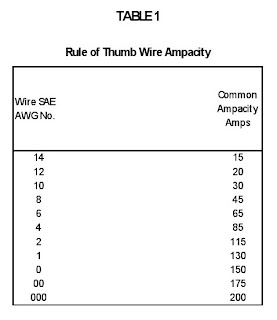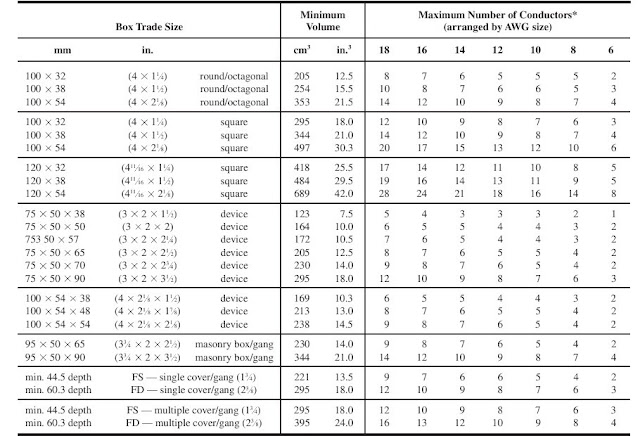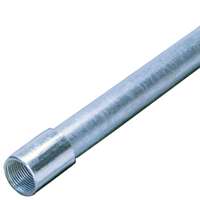Armored Cable. Can be used indoors in dry locations, but it cannot be used outdoors or areas where metal armor will corrode. (see fig.1)
Fig. 1. Plastic sheathed cable (NMC), often called ROMEX, BX is an armored cable (AC) and should be used wherever there is a chance of physical damage. It is the most common type of electric cable, use in residential wiring application.
The plastic-sheathed cable is preferred, because it is more flexible and easier to pull and strip. It is more convenient when used in fishing the wires or cables.
Another kind of nonmetallic sheathed cable is a corrosion-resistant. It is called NMC. Used for any residential wiring application except the service entrance. It is installed in moist, damp, and corrosive locations.
Nonmetallic cables (NM and NMC) are very convenient. But problems can and will arise if handled improperly or carelessness.
Common possible problems that may occur:
- If you bend nonmetallic cable too sharply, you can split the insulation of the individual wires and cause short circuits.
- The insulation also can get worn through in spots if you pull the cable carelessly through holes.
To prevent this problems:
- Just be careful when installing NM or NMC cables and make a good practice, take 5 mins, used to observe where the wire is going to run. This will reduce the possibility of complications.
Wire Sizes
Wire sizes are measured by gage numbers. It gets bigger as the wire diameter gets smaller. See Fig 2.
Fig. 2. The thicker the wire size, the smaller the gage number becomes.
When you think about wire, you think about ampacity, which is current or amperage capacity.
In ordinary electric work, wire sizes run from size 000 ( biggest), to size 14 (smallest). For house wiring, a rule of thumb by many skilled electricians is never to use anything smaller than No. 12, which allow extra ampacity for future load.
Shown below is Table 1: Rule of Thumb Wire Ampacity:
The aim, therefore, is to install wire that's thick enough for a safe installation, but not so thick that its capacity is wasted.
"The thicker the wire is, the more current it will carry without getting overheated".
Outlet boxes may be constructed of aluminum, galvanized steel, or plastic. They are measured in cubic inch capacity to determine the number and sizes of wire allowed in each box.
Example in Fig. 3 shown below, a 4-in. octagon box is used for wiring spotlights.
Available also are 4-in. square boxes and "handy boxes," and many others. A handy box is so called because it has a nail-on adapter. See Fig. 4.
Fig. 4. A "handy box" with built-in, nail-on adapters is designed to enable the electrician to install the box quickly in awkward places.
Fixtures & Receptacles (in Boxes)
According to the National Electrical Code (NEC) (see Article 314 NEC 2011), only a limited number of conductors are allowed in a box. The rule is that the boxes shall be large enough in volume to provide free space for all the conductors enclosed in the box.
Table 2 lists some of the typical combinations permitted.
Table 2
A conductor that runs straight through a box counts as only one wire. Wires to fixtures are excluded from counts and the rest of the conductor are all counted as shown in Fig. 5.
Fig. 5. Counting conductors in the box, and following proven wiring rules, ensures that the installation will be permanently safe.
Take note that a receptacle or switch count as one wire, as do any fixture studs.
Conduit
There are three (3) kinds of conduit, generally use. These are:
- Rigid Metal Conduit (RMC)
- EMT (Electric Metallic Tubing) or "Thin Wall"
- IMC (Intermediate Metal Conduit)
Definition (According to NEC Code-Article 344.2): A threadable raceway of circular cross section designed for the physical protection and routing of conductors and cables and for use as an equipment grounding conductor when installed with its integral or associated coupling and appropriate fittings. RMC is generally made of steel (ferrous) with protective coatings or aluminum (nonferrous). Special use types are red brass and stainless steel.
Electric Metallic Tubing (EMT)
NEC Code Article 358.2 Defines: An unthreaded thin-wall raceway of circular cross section designed for thphysical protection and routing of conductors and cables and for use as an equipment grounding conductor when installed utilizing appropriate fittings. EMT is generally made of steel (ferous) with protective coatings or aluminum (nonferrous).
Intermediate Metallic Tubing (IMC)
NEC Code Article 342 states that: IMC is thinner-walled and lighter in weight than rigid metal conduit, and is satisfactory for uses in all locations where rigid metal conduit (RMC) is permitted to be used. Threaded fittings, couplings, connectors, and so on, are interchangeable between IMC and RMC. Threadless fittings for IMC are suitable only for the type of conduit indicated by the marking on the carton.
Article 342.2 defines: Intermediate Metal Conduit (IMC) - A steel threadable raceway of circular cross section designed for the physical protection and routing of conductors and cables and for use as an equipment grounding conductor when installed with its integral or associated coupling and appropriate fittings.
Conduit is easy to install in new work, since the walls are open. The conduit is installed to the framing works along with boxes.
The NEC permits only four (4) 90 degree bends in any conduit between two boxes. The bends are made with a conduit bender. Benders are also called conduit benders, persuaders, or hickeys. (See Fig. 6)
Fig. 6. Conduit must be carefully bent so there are no crimps or dents. Special tools, called "persuaders" or conduit benders, have to be used for this task.
How to determine what size of conduit to buy or used?
The number of wires allowed to pass through the conduit depends on the size of wire and the type of insulation on the cable.
The NEC allows only 40% of the conduit area to be filled.
Cutting, Splicing and Connecting Wires
There are two (2) ways to splice wires permanently:
- Using a solder
- Using wire nuts or other types of solderless connectors
Fig. 7. There are two (2) ways to splice, both permanent. One method is solderless with pressure holding the wires together. The other method uses solder, which connects the wires electrically as well as mechanically.
How to splice?
When making a solder splice, remove about 3 in. of insulation then cross the wires about an inch from the insulation and twist it neatly together. Thicker wires may require using a pair of pliers, not just fingers. After twisting, the wires will be heated and solder applied to the splice accordingly.
Solderless connection. A wire nut makes a a solderless connection permanent. Put the two ends of clean wire together and push them into the nut. Then screw the nut down tightly to the wire. Tightening the wire nut to the wires, a satisfactory connection is made.
When attaching a wire to a screw connection, always bend the end of the wire into a loop. Then attach the loop under the screw in the direction the screw tightens as in Fig.8. A variety of crimp-on connectors are also available for installing wires on screw terminals. The cutter-stripper tool can generally be used to crimp these connectors to the wires.
Fig. 8. A simple thing like putting a screw connection in the wrong direction can cause faulty connections.












